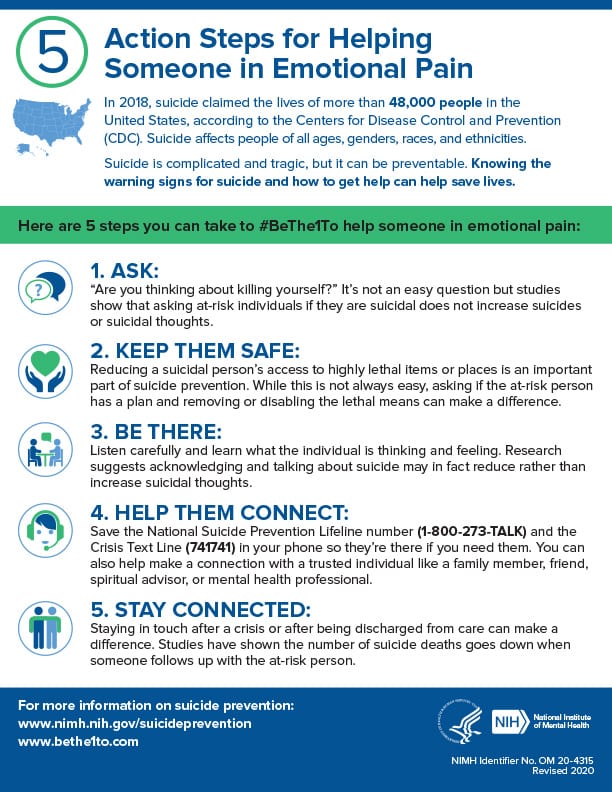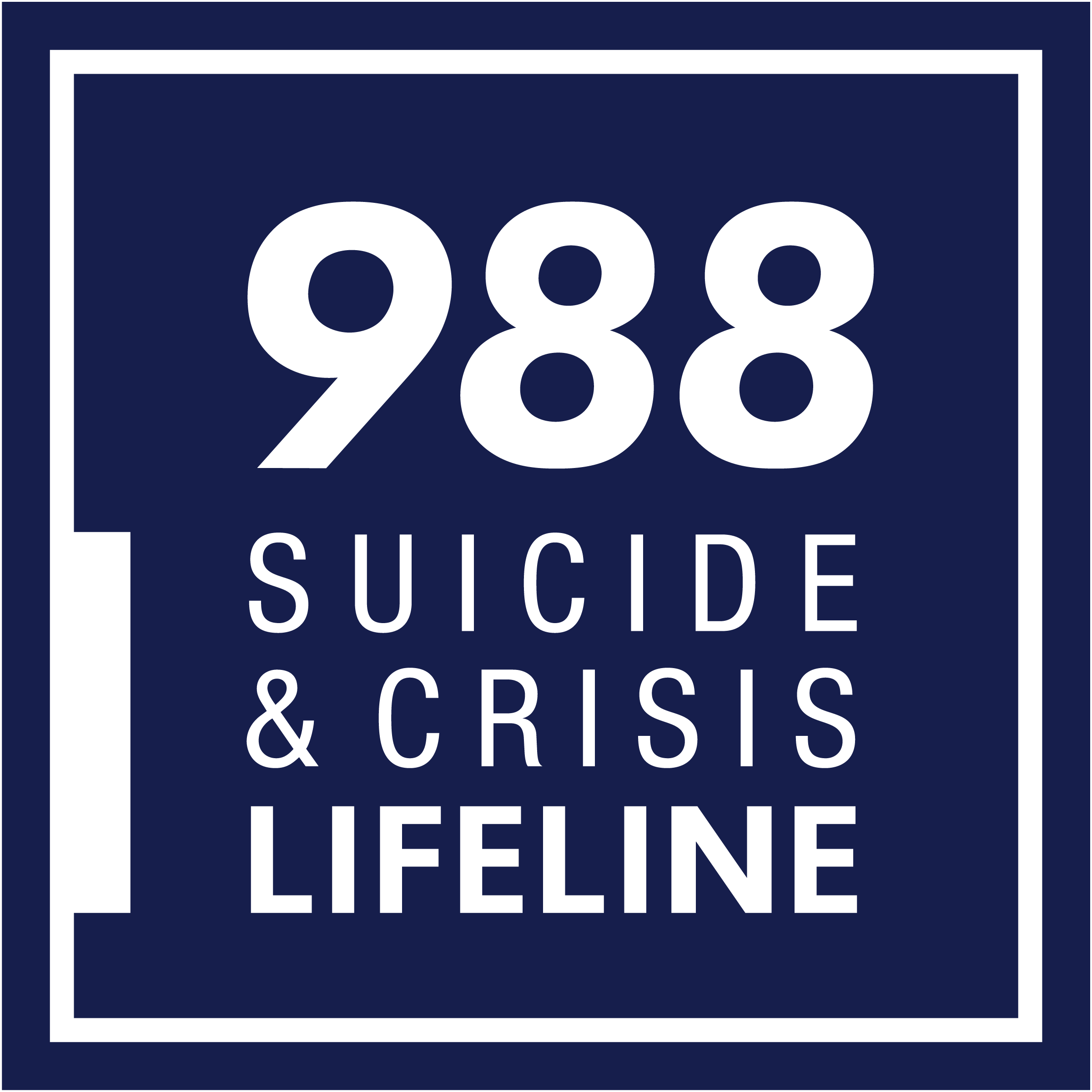5 Action Steps for Helping Someone in Emotional Pain

In 2018, suicide claimed the lives of more than 48,000 people in the United States, according to the Centers for Disease Control and Prevention (CDC). Suicide affects people of all ages, genders, races, and ethnicities.
Suicide is complicated and tragic, but it can be preventable. Knowing the warning signs for suicide and how to get help can help save lives.
Here are 5 steps you can take to #BeThe1To help someone in emotional pain:
1. ASK:
“Are you thinking about killing yourself?” It’s not an easy question but studies show that asking at-risk individuals if they are suicidal does not increase suicides or suicidal thoughts.
2. KEEP THEM SAFE:
Reducing a suicidal person’s access to highly lethal items or places is an important part of suicide prevention. While this is not always easy, asking if the at-risk person has a plan and removing or disabling the lethal means can make a difference.
3. BE THERE:
Listen carefully and learn what the individual is thinking and feeling. Research suggests acknowledging and talking about suicide may in fact reduce rather than increase suicidal thoughts.
4. HELP THEM CONNECT:
Save the National Suicide Prevention Lifeline number (1-800-273-TALK) and the Crisis Text Line (741741) in your phone so they’re there if you need them. You can also help make a connection with a trusted individual like a family member, friend, spiritual advisor, or mental health professional.
5. STAY CONNECTED:
Staying in touch after a crisis or after being discharged from care can make a difference. Studies have shown the number of suicide deaths goes down when someone follows up with the at-risk person.
For more information on suicide prevention:www.nimh.nih.gov/suicidepreventionwww.bethe1to.com



